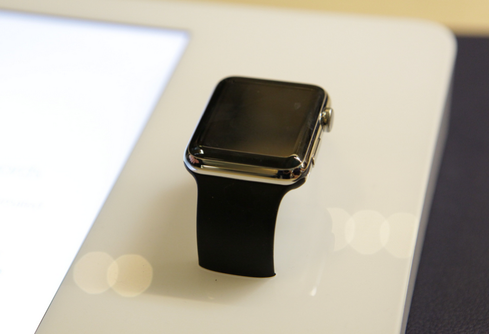The Apple Watch made a big splash in the media, but some financial and tech analysts aren't convinced consumers and enterprises are buying the hype.


Apple Watch: My In-Store Demo
Apple Watch: My In-Store Demo (Click image for larger view and slideshow.)
While the launch of the Apple Watch may have been surrounded by an avalanche of media interest, the hype hasn't translated into robust sales, according to a research note from Pacific Crest senior research analyst Andy Hargreaves.
The analyst cut his sales forecast for the fiscal year for the device to 10.5 million from 11 million, according to a report in USA Today that reviewed the research note.
Hargreaves also warned soft follow-up sales would impact sales in fiscal 2016 -- this prompted him to reduce his forecast to 21 million for that period, down from a previous estimate of 24 million.
"Anecdotal evidence suggests Apple Watch demand is slowing quickly," Hargreaves' note cautioned. "This dovetails with recent supply checks, which suggested a reduction in component order volume."
In May, UBS analyst Steven Milunovich issued a similar warning that was widely picked up by the media, calling Apple Watch sales tepid and dropping his yearly sales forecast for the device by 10 million, down to 31 million from 41 million -- a number still significantly higher than the Pacific Crest estimate.
Other analyst firms appear more optimistic on the Watch.
A May note from analytics firm Global Equities Research authored by managing director Trip Chowdhry and analyst Tej Singh predicted the Apple Watch would be the most addictive device ever created for both consumer and enterprise.
"Our research continues to indicate that Apple can now easily sell between 40 million and 42 million Apple Watches in CY2015," the note stated.
Apple has so far remained silent as to how many of its smartwatches have been bought, but with a price tag starting at $350, ranging up to $17,000, the device may be out of the general consumer's price range.
Reviews of the device so far have been mixed, praising the smartwatch's aesthetic and build quality, though usability frustrations and limitations have not gone unnoticed. (It's hard to press the right app on such a small screen, and battery life leaves something to be desired.)
[Looking for an Apple Watch alternative? Here are some of our favorites.]
Last month, Pebble announced the release dates for its latest entry into the smartwatch market, the Time, which will be sold exclusively through Best Buy retail stores.
The Pebble release is the latest in a long string of smartwatch releases by consumer electronics companies like LG, Huawei, HP, Samsung, and even traditional watchmakers like TAG Heuer, which is targeting the same luxury market as Apple.
Total smartwatch ownership in America is forecast to reach 9% of the adult population by 2016, according to an April report from IT research specialist NPD Group.
The second most successful platform for wearable devices is Apple archrival Android. Around 720,000 Android Wear devices shipped in 2014 out of a total of 4.6 million smart wearable bands, according to a February report from Canalys.
About the Author(s)
You May Also Like







